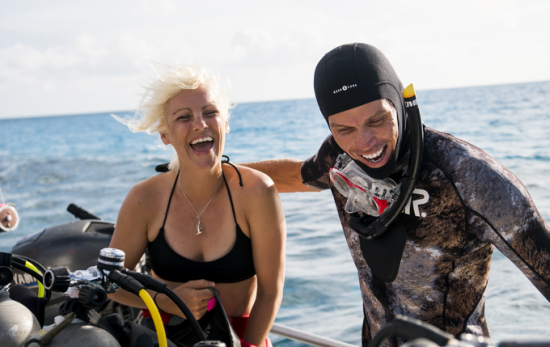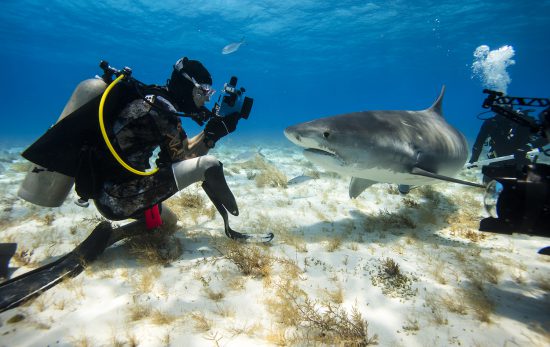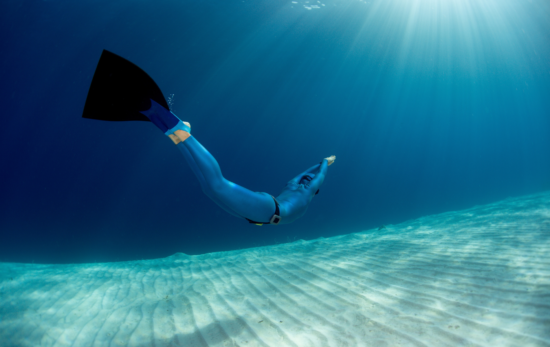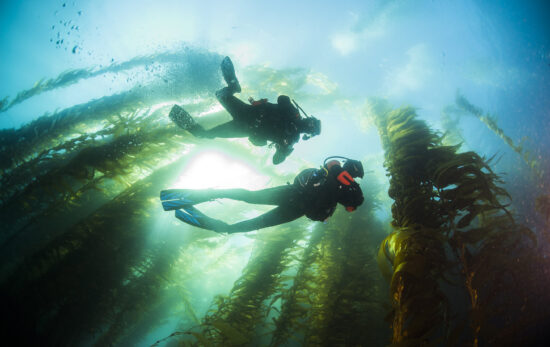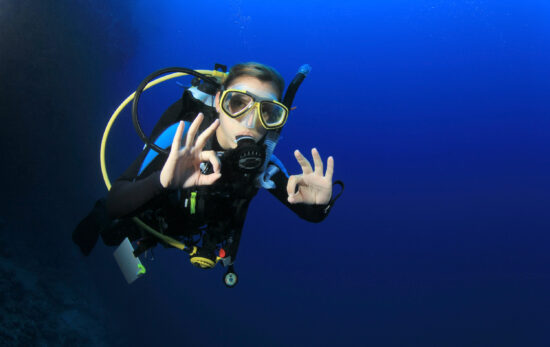Divers may have the ability to breathe underwater, but we’re still human. From sneezes and coughs to vomiting while diving, many of our weird bodily functions still happen whether you’re 10ft, 50ft, or even 100ft beneath the surface.
There may come a time when you’ll experience coughing, nosebleeds, vertigo, or vomiting while diving. It’s not safe to rush to the surface, so what do you do? Read on for the answers…
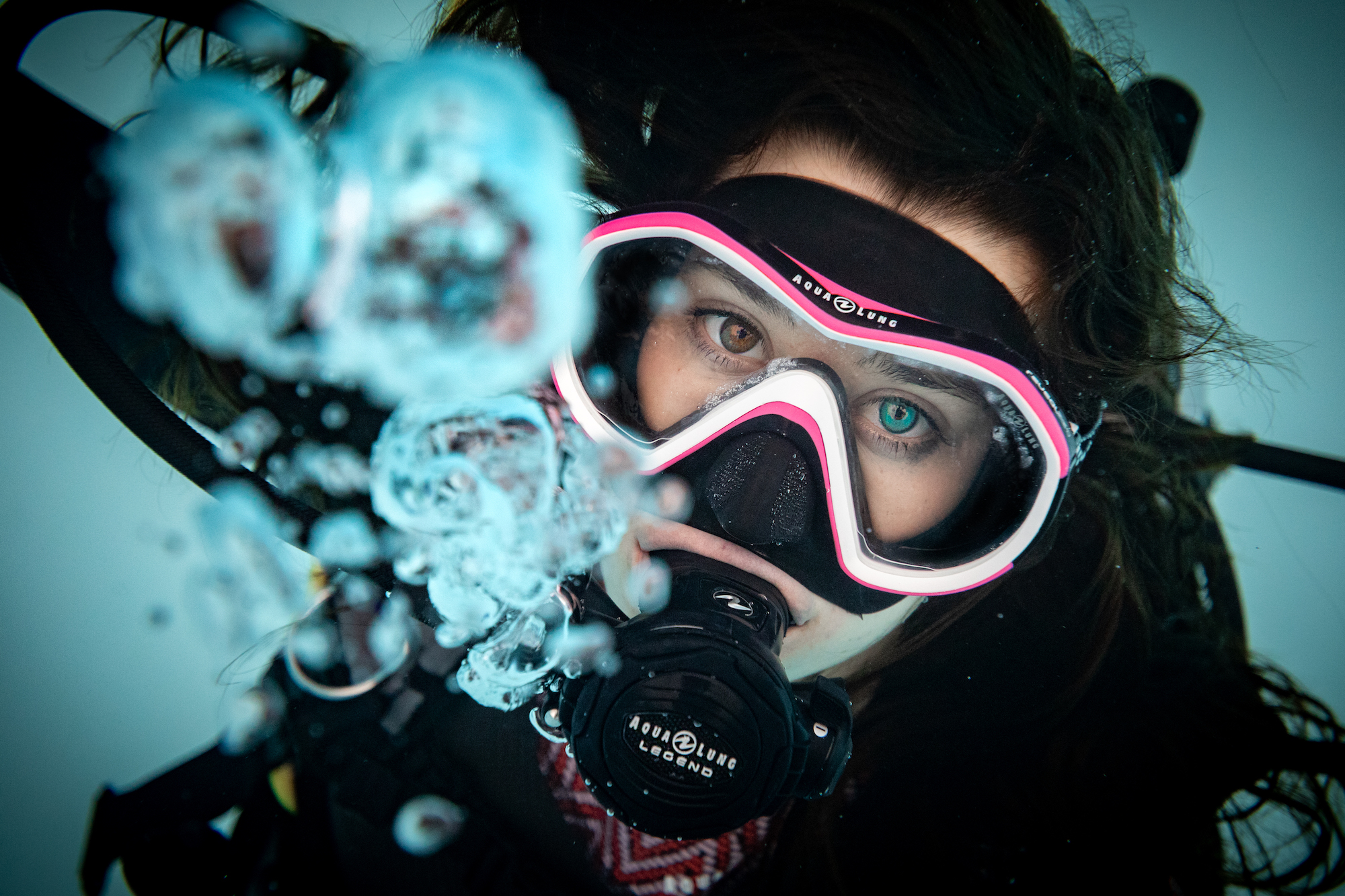
Coughing / Choking
The gas you breathe from a scuba tank can be a bit dry, and sometimes it’s necessary to cough. Or maybe, while laughing at your dive buddy, you get a little water down your throat. It’s perfectly alright to cough into your regulator until your airway is clear.
If you feel that telltale tickle in the back of your throat, try to move into an open area where you won’t bump into anything. Also, be aware of your buoyancy when coughing while scuba diving, as you may unknowingly hold your breath.
Sometimes a cough is more than just a cough. If you have chest pain and/or difficulty breathing in addition to a dry cough, these could be signs of Type 2 DCS. If the cough has a metallic taste, or if you experience shortness of breath accompanied by a feeling of liquid rising from the back of your throat, discontinue the dive and seek immediate medical help. These are symptoms of a rare but serious condition called immersion pulmonary edema (IPE).
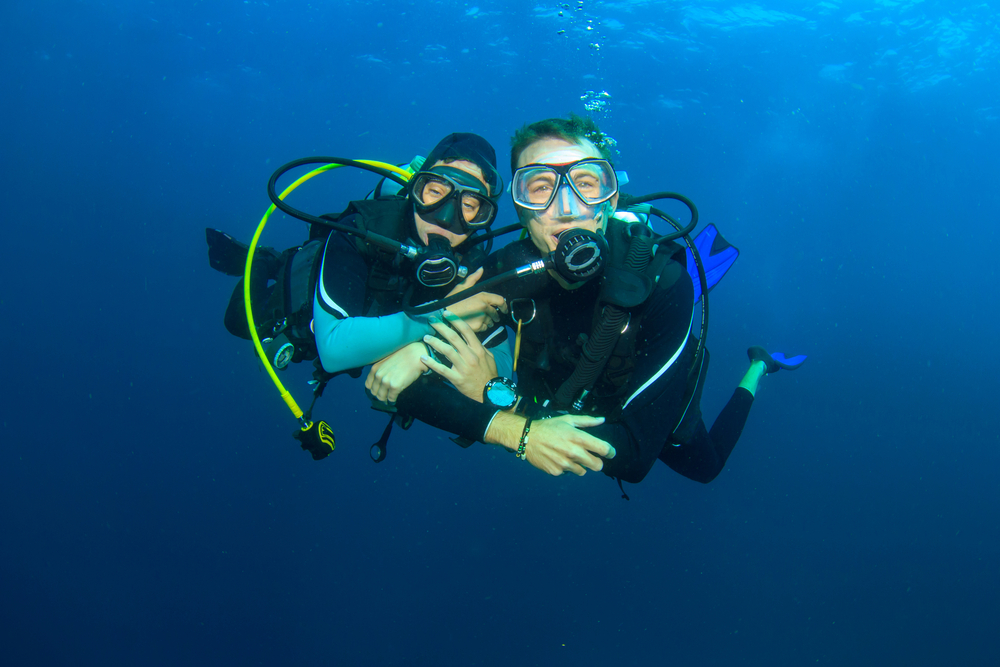
Sneezing
Can you sneeze while scuba diving? Yes! Sneezing underwater is more or less like sneezing on land.
If you feel a sneeze coming on, gently hold your regulator in, and try to sneeze through your mouth instead of your nose. Breathe normally until the sneeze comes; never hold your breath underwater. If water (or something else) leaks into your mask, find a safe opportunity to pause and clear it out.
If you’re in the middle of an ascent or descent, it’s a good idea to signal or grab onto your buddy. They can help maintain your position in the water.
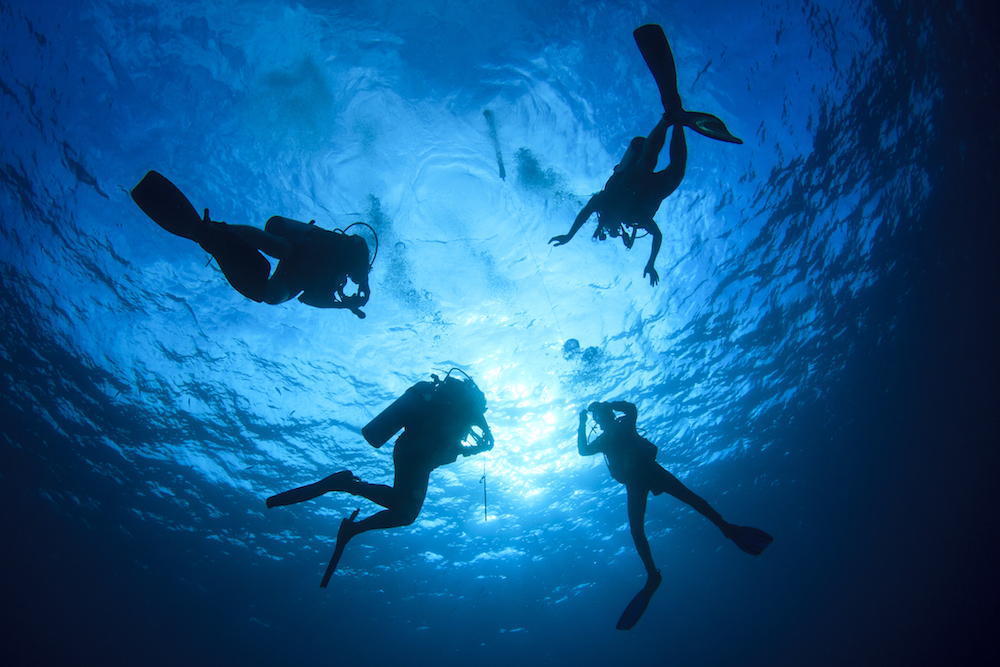
Vertigo / Disorientation
Vertigo feels like the world is spinning or turning upside down. If you experience vertigo when diving and lose track of where the surface is, firstly remain calm and keep breathing normally. Then, signal to your dive buddy for help and try one of the following tips:
- Exhale and watch where your bubbles go. Follow them slowly to the surface.
- Look for water droplets in your mask; they will always drip down. Head in the opposite direction.
- Use a fixed point of reference to steady your focus – your dive computer, a shot line, or even your buddy can all help!
If you experience vertigo during or after a dive, discontinue diving for the day and contact DAN. Vertigo can be a sign of decompression sickness, hypoxia, contaminated breathing gas, an ear equalization issue, or a side effect of seasickness medication.
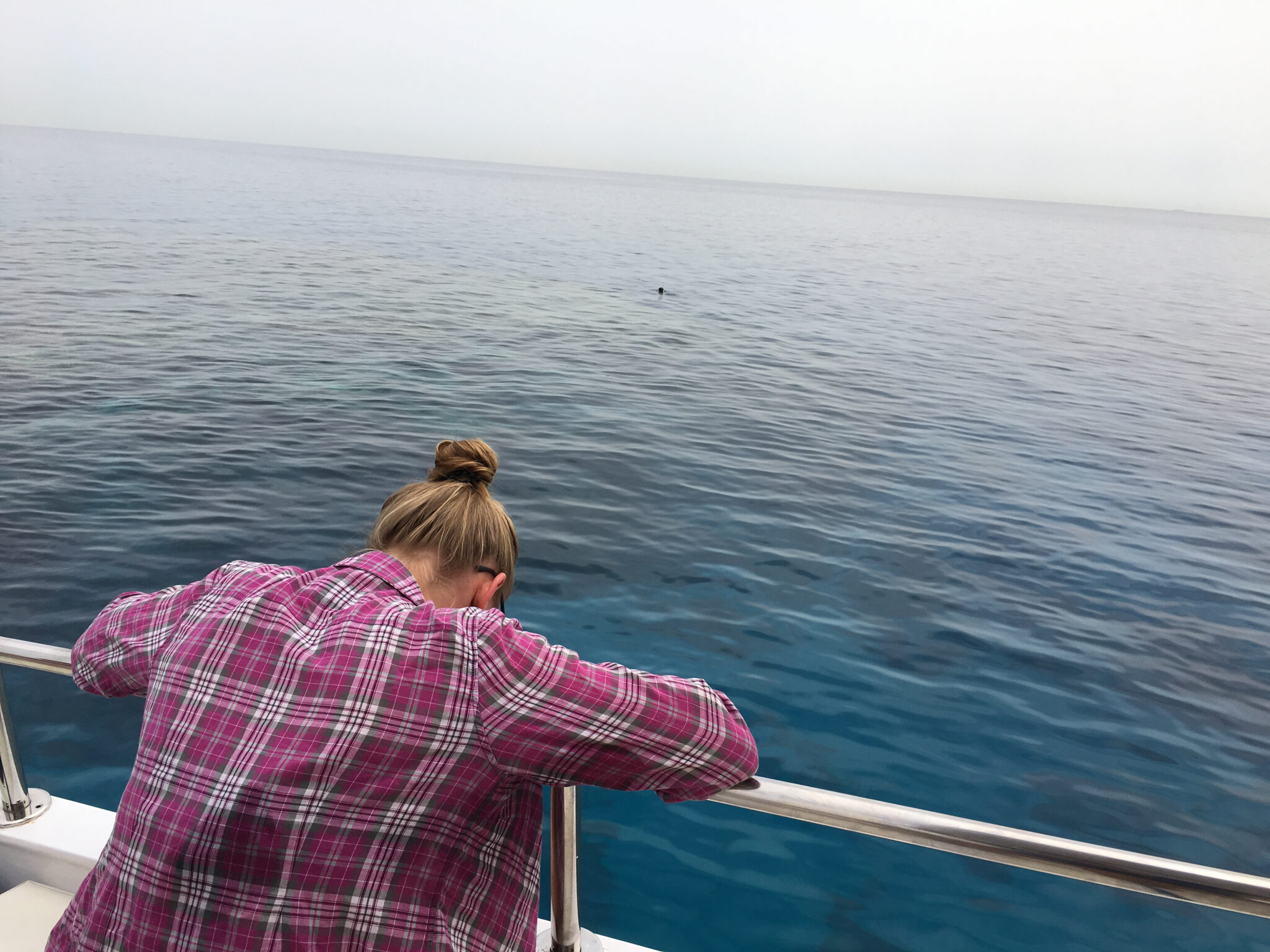
Vomiting
The side effects of seasickness, nerves, or even an unpleasant meal can still take hold at depth, and many divers wonder what to do if you throw up while scuba diving. If you feel the need to vomit, the best thing you can do is hold your regulator in and let your body do what it needs to do. Modern second stages can take it.
Don’t take your regulator out, even partially. After the expulsion, you may reflexively inhale; if the regulator isn’t in your mouth, you’ll suck in water instead of air.
If you can hold onto a buddy or otherwise steady yourself in the water, this can prevent uncontrolled ascents or descents. When you feel ready, ascend safely and discontinue diving for the day. If your regulator is unsuitable for breathing after vomiting while diving, switch to your alternate. At the surface, seek treatment and stay hydrated.
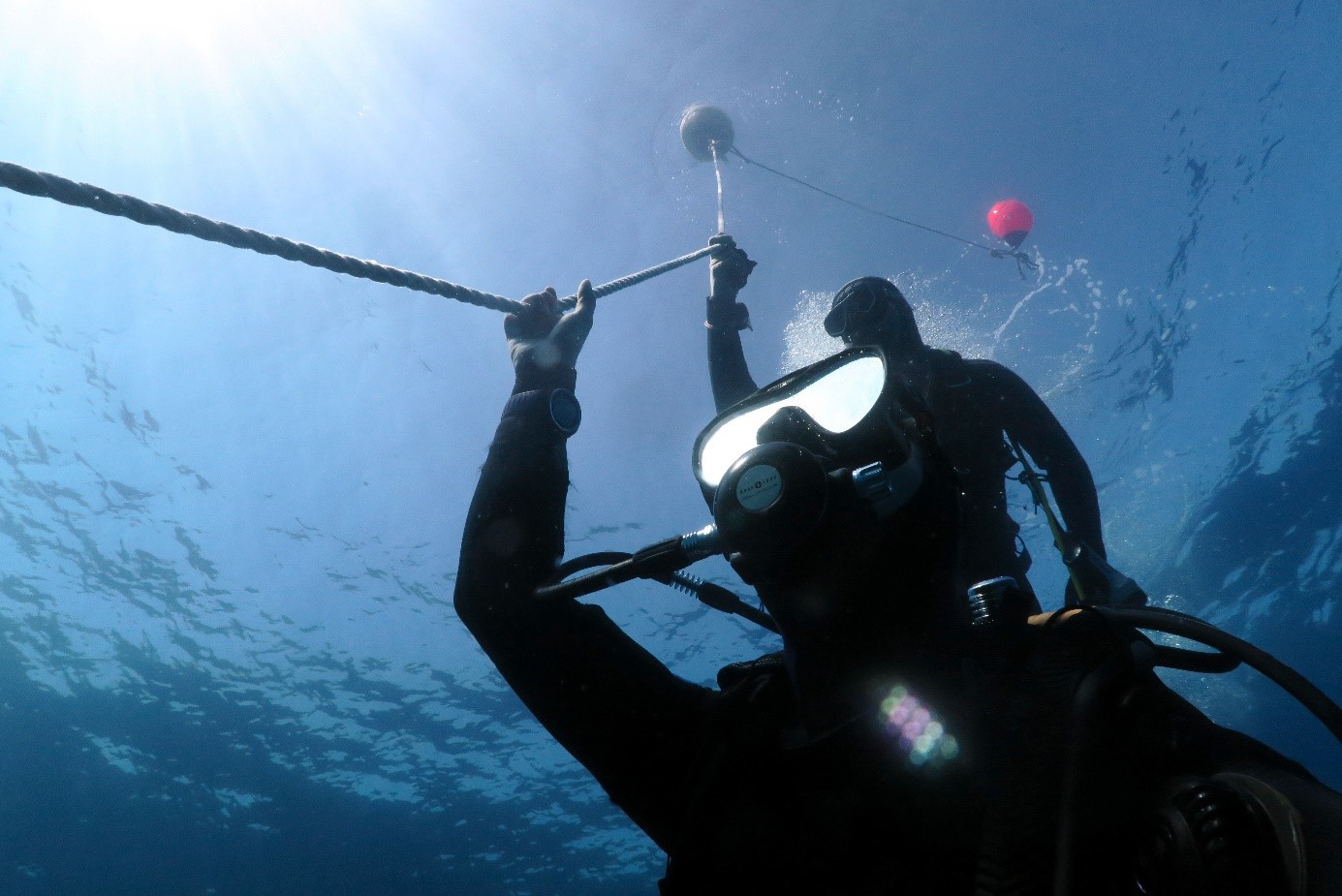
Nosebleeds
Nosebleeds during or after a dive are often the result of sinus barotrauma. This is when tiny vessels in your sinuses burst, and when gases expand on ascent, the blood is forced out through your nose (a nosebleed) or the back of your throat (postnasal drip).
Another cause is when your nasal lining itself dries out, making it sensitive to even the lightest trauma – like pinching your nose!
Although there might be a sharp facial pain, you probably won’t even realize you’ve had a nosebleed until you see the blood in your mask (which, by the way, appears alien green underwater thanks to color absorption).
Despite the alarming appearance, nosebleeds are not usually serious. The best way to prevent them is to descend slowly, equalize properly, and never dive with a cold or congestion.
However, if you’re regularly getting a nose bleed after diving (or are at greater risk because of blood-thinning medication), then do seek medical advice.
Scuba diving preparation and precautions
Learn more about how to be prepared for a variety of diving emergencies in the PADI Rescue Diver course. It’s serious fun, and it will help you become a better dive buddy. You can even get started online today with PADI eLearning!
PADI Dive Centers and Resorts also offer first aid and CPR training through Emergency First Response. From a nosebleed to dehydration after vomiting while diving, you’ll get the skills you need to care for someone until emergency responders arrive.
Related Reading:
5 Important Reasons to Take the PADI Rescue Diver Course
4 Benefits of Being an Emergency First Responder & How It Can Help Save a Life
A First Aid Kit for Every Activity
Assemble Emergency Kit Essentials in 30 Minutes or Less
10 Tips for Safe Dive Trips

